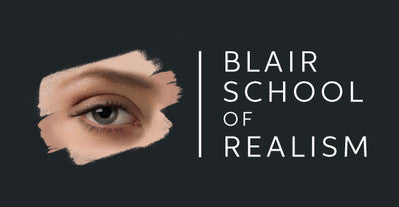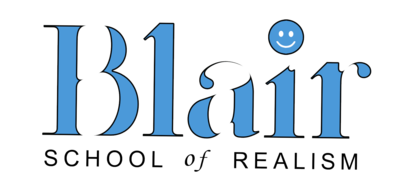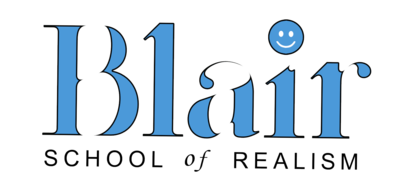Dru Blair: Airbrush -Virtual Zombie workshop
>
There are few images
more terrifying than
a Zombie.
Ever since Romero's
"Night of the Living Dead,"
people have been fascinated
by the walking dead.

Zombies are fun to paint
While terrifying to some people, artists enjoy the freedom that painting the undead offers. There is no need to worry about accurate skintones, or accidental blemishes, for example.
Texture, texture, texture!
This subject offers a great opportunity to explore different texture techniques.

Have you wanted to paint at this level, but lacked the necessary training?
You aren't alone. Many people strive to elevate the quality of their work to a more professional level, but find their progress slow and frustrating.
You can learn to paint this too
It's easy when you know how. In this workshop, we will show you how to elevate your art to a higher standard of quality.

If you've been struggling to raise the
quality of your art, we can help.
We make painting simple, easy, and clear. That's one of the many reasons we are considered the largest and most reputable airbrush school in the world.
Imagine what you will do when you have the right training!
Without training, you could spend years (or more likely, decades) trying to unlock all the secrets of realistic painting. Now you can reach your artistic potential in a fraction of the time that it would take if you tried it on your own.

Everything you need is provided
We aren’t just limited to teaching you all about the airbrush. We include a variety of other art tools to help you make your present and future artwork the best possible.

What you will learn
01
The elements of the Zombie
To create a zombie, we must first be able to see and understand how to approach the subject. What elements can we add, include, and exclude?
02
When to use Transparent paint
There are a lot of opinions as to whether transparent or opaque is better. The answer is that each possesses unique characteristics that need to be considered first.
03
How to achieve that wiry hair look
Vargas had a way of rendering hair effectively with very few details. We will explain the process.
04
How to use value
We will show you how to choose the right value and how to apply it correctly. It can be your best aid when trying for accurate results.
05
Modeling skin texture
We'll show you how to create 3 skin textures using a variety of techniques.
06
Understanding simultaneous contrast and the role it plays in your paintings
Simultaneous contrast is the illusion that colors close to each other seem more different than they actually are. We will show you how to identify and harness this problem with color discrimination and turn it into one of your most powerful assets.
07
Your 5 choices when you make a mistake
Sooner or later, we all make painting mistakes. If you don’t know how to repair a mistake, your painting will be compromised. We will teach you several ways to repair a mistake, so you will always choose the correct one for your painting.
08
5 methods to transfer the image to your painting
We will show you how to maintain your proportions when transferring your photograph to the painting surface. Learn which ones are most effective.
09
5 different ways to use a shield
Some edges are soft, some are hard, and some are in between. You will learn the shield techniques you need to create every type of edge.
10
Proper paint reduction
You will learn how to reduce the paint at the proper ratio.
11
When to use the bounce method
There are several ways to utilize a hand-held shield. Here you will learn to add subtle changes with the bounce method while using masks.
12
Tool introduction
We don’t limit your training to just the airbrush. Many tools complement the airbrush, and we want you to be able to enjoy having them in your arsenal. You will also learn the results for each tool, so you will know which tool is best for each situation.
13
Eraser techniques that will make a difference in your art
The eraser is a versatile instrument, and when properly used, it can blend softly or cut like a knife. We will show you how to get the most out of your eraser.
14
Using the blade correctly
The blade can be a wonderful ally, but it will destroy your painting if you don’t use it correctly. Here we will show you exactly how to hold it and how to use it on different surfaces.
15
How to say more with less
Few people realize how subtle nature is, even in a Zombie painting. Sometimes, all it takes is a suggestion.
16
Differences between Frisket and paper
Vargas used masks extensively. Unfortunately, the Frisket he used is no longer available. We will show you how to get around that problem.
17
Managing edges and transitions
The trickiest part of airbrushing is controlling edges. Adjusting existing edges is often necessary, but can be a bit tricky. We will teach you how to change the sharpness or softness of an edge, even after you’ve created it.
18
Masking techniques that work
A mask can be used in a variety of ways. For example, you could use split paper/frisket techniques, shield reveal or shield conceal methods to create a line. You will learn which masks are best for any given situation.
19
How to layer to create more complex skin tones
Skin is a complex, translucent surface. We will show you several ways to quickly achieve it in layers.
20
Buffered Contrast Reduction, and how to use it
Contrast, along with proportions and edges, can make or break a painting. Controlling contrast is simple using Buffered Contrast Reduction. We will explain what it is and how to use it.
21
How to find and fix problems in your paintings
Sometimes you can’t see the forest for the trees, and often mistakes go unnoticed. We will show you a simple technique that allows you to quickly spot problem areas that you would have otherwise overlooked.
22
How to develop observation techniques to expand your visual discrimination
Its difficult to paint anything accurately until you can really see it. We will teach you how to visually dismantle an object, then reassemble it on the painting surface.
23
Selling your work
Learning about the business of art and marketing allows you, as an artist, to earn money for your creations. You will learn about pricing, galleries, copyright, prints, Giclées, originals, artist representatives, and most importantly, how to negotiate.
What students are saying

I attended Dru's workshop with the hope of learning to paint. I left with the ability to "see" and a system that allowed me to develop my own understanding of painting and colours. Your system has given me the freedom to explore my own creativity.
Paul MacDonald
(Air Art Studios) Australia

Dru's teachings showed me how to create great detail and gave me the ability to achieve PHOTOREALISM in my artworks. Thank you for pioneering the world of photorealism in airbrushing, I doubt I would have got here without your long nights and many experiments .
David Naylor
Spain

Dru's workshop influenced the way I paint and gave me some new concepts, knowledge and skills to implement into the way I worked today I recommend it!
Mitch Lowther
(Airbrush tutor) Australia
Why should you take this class? Consider your options:
Option 1. You could give up on your dreams and continue doing what you are doing, but let's be frank. No one wants to spend the rest of their life wondering "what if?" You are here because you believe that you deserve to be a better artist than you are now. You aren’t the kind of person who’s going to settle for mediocrity.
Option 2. You could try practicing on your own, hoping to figure it out someday. It's very difficult and time-consuming without all the shortcuts that we could show you, but it's an excellent choice if you have all the time in the world.
Option 3. Enroll in this course and enjoy the benefits of step-by-step guided instruction. You get what you need without wasting years or possibly a lifetime of guessing. If you don’t have time to travel to all our workshops, try our Classroom in a Box series and learn from home.


Our
Guarantee
We are so sure that we offer the best airbrush course in the world that we are willing to offer you tuition money back if you don’t notice an immediate improvement in your art, and in the way you see color after taking this course.
Dru Blair on fear & art

This Class is held Virtually
If you are new to airbrushing, consider purchasing the Foundation kit and practicing ahead of time.
Classes typically run from 9 am until 6 pm with a break for lunch around 1:00 pm.
Virtual Workshops
Since it is not always possible to attend a workshop in person, we are offering this class virtually via Zoom. Your class materials will arrive at your doorstep about a week before the class, and you will receive a link the morning of the workshop. If your schedule prevents you from attending the full workshop, virtual students can view the video recordings from the workshop for two weeks after its conclusion. Click here for more information about our Virtual workshops.




